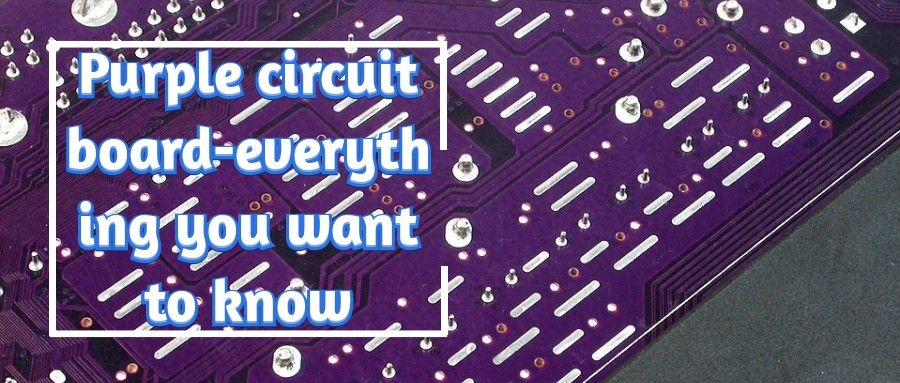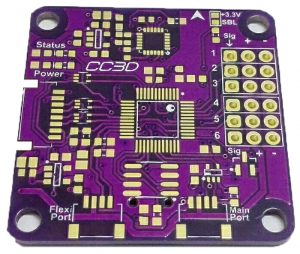
What is Purple circuit board?
The solder mask of the printed circuit board species the color of the PCB. So the purple solder mask will offer the purple PCB. Usually, the general workability increases with the purple color, but different people have different preferences. And your choice will depend on the purpose you want to achieve from your PCB as this color is not standard, so you may have to place a separate order to your manufacturer to have purple PCB supplied. Manufacturers will charge differently according to your order. So in this sense, you may be asked to pay a premium for purple color PCB.
Best PCB Material for Purple PCB fabrication
Following PCB materials are used for purple PCB manufacturing:
- Paper Board:
FR-1, FR-2, FR-3 are examples of paper boards used for purple PCB fabrication.
- Composite Boards:
CEM-1, CEM-2 are used as composite boards for the manufacturing of purple PCB.
- Special Boards:
Some unique boards, such as ceramic boards and metals boards, are also used for purple PCB.
- FR4:
FR4 is the most commonly used material for purple PCB fabrication. FR4 makes the PCB boards strong, water-resistant, and offer good insulation that improves signal integrity.
Learn more about what is Fr-4 in PCB fabrication?
HDI boards have a higher density for wiring per unit area as opposed to conventional panels. These boards are used in purple PCBs for improving electrical performance and reducing the size and weight of the PCB.
- Polyester resins:
Polyester resins, also known as polyethylene terephthalate (PET), are most commonly used in PCBs for flexibility. Polyester helps in flexibility, excellent electrical properties, and high moisture resistance.
- Polyimide resins:
Polyimide is highly resistant to heat and chemicals, so it is used in purple PCBs to resist the physical state.
- Epoxy Resins:
Epoxy resins are used in purple PCBs for mechanical protection because they are good insulators against aggressive environments.
Difference between Standard Purple PCB and Heavy Copper Purple PCB
- Some of the differences between a standard purple PCB and a heavy copper PCB are given below:
- A lesser amount of copper is used in standard purple PCBs, approximately 1 oz having a skinny size. On the other hand, heavy copper PCBs are thick in diameter because there is a large amount of copper.
- By standard, we mean the thickness of the PCB. So the standard thickness offered by manufacturers is 0.063 in or 1.57 mm, which is true so far. However, nowadays, there is a range of sizes available depending on your choice for PCB fabrication which is 0.093 in and 0.031 in. A heavy copper PCB is made with copper ranging from 4 oz per ft2 to 20 oz per ft2.
- Heavy copper PCBs are designed to deal with prosperous activities. On the contrary, standard PCBs can only offer lighter activities.
- Mechanical strength in heavy copper PCBs is high because of the increased use of copper; on the other hand, standard PCBs have lesser mechanical strength.
- Standard PCBs do not offer good conduction for the current. But heavy copper PCBs offer good conduction for the current because of the copper used in them.
- Thermal distribution is efficient in heavy copper PCBs which improves their performance as compared to standard PCBs.
Plating Methods for Purple PCB
There are four main types of plating for purple PCB that is explained below:
- Finger Plated Plating
In this method, rare metals, for example, gold, are plated on the board edge of the connector and board edge joints to provide higher abrasive resistance and lower contact resistance. This process is also known as partial planting for protruding.
- Through-Hole plating:
Many ways have been introduced for the substrate borehole process. This is known as wall activation in industries. Through-hole plating is an essential process for the drilling purpose.
- Plating based on Real Linkage Selective Method:
This method is used for pinning purposes such as connectors, transistors, and integrated circuits. The simple linkage method can either be used as a manual or automatic. Pinning individually is an expensive approach, so batch welding is used for this purpose.
- Brushing Plating:
This technique is used for positioning electrodes, and electrodes minimum parts are immersed in the plating electrolyte process. This technique can be used for plating a limited area. This technique is a good approach for repairing waste boards in electronic assembly shops.
Drill Size Determination in Purple PCB for the Components
Holes are the first step you have to take when you are making an electronic device from scratch. A few decades ago, people were using the simple drill for making holes in their PCBs. They were using simple routines which were available to them by hand. But now, there is a standard drill size for PCBs. PCB manufactures have offered a general table for drill sizes and hole sizes. To know if the drill size is appropriate for the design components, you need to follow the general idea, which says:
Your hole should be 0.3 mm more comprehensive than your components. Let’s say your element is 0.3 mm wider than your drill should be 0.6 mm larger in diameter.
Standard Drilling Tolerance for Purple PCB
As drill bits are machines, so they have standard tolerance on the size. Usually quoted standard drill tolerance for purple PCB varies from 0.003 mm to 0.010 mm depending on the size of the drill bit. However, another permutation like -0 to +0.15 mm and -0.05 to +0.1 mm is also accepted.
Can you give overlapping holes in your purple PCB?
Overlapping holes can be helpful in your purple PCB design for having slot information. You won’t have to make an extra layer for informational purposes. However, this practice is not good because this may confuse the manufacturer.
Overlapping drill holes can cause breaking drill bits, and as a result, a small piece of material may remain in hole barrels. This will result in Voids in the plated holes. So overlapping spots should be removed before sending your purple PCB into production.
Is there any other color than white for purple PCB silkscreen print?
Silkscreen is usually white human-readable characters that help identify components, warning symbols, PCB letters, company logos, date codes, and manufacturer marks. Specially formulated inks are used for silk screening. Although the standard color is white, you can still use other colors in purple PCB for silkscreen purposes. You can use:
- Red
- Blue
- Black
- Yellow
At once, PCB CAD software only allows few standard fonts in silkscreen layers.
Full PCB Manufacturing Services
Panel Sizing during Penalizing Purple PCB Design
In purple PCB manufacturing, you cut many small sheets from a large material sheet known as a panel. The output of surface mount technology can be increased by panel size. In purple PCB penalization, mass production of many small boards is involved. So in designing a purple PCB panel, you have to take care of many things. It would be best if you got the correct thickness of the board. Your board design should also meet standard panel design. Some general panel sizes are mentioned below:
- 9 by 32 inches
- 9 by 24 inches
- 18 by 12 inches
- 18 by 24 inches
A4 size is also preferred for a panel of purple PCB. You can choose your sizes, but you have to ensure that material utilization and manufacturing optimization are meeting correctly.
Comparison of NC Drill File and Gerber File of Purple PCB
A Gerber file is the first step of fabricating a purple PCB board. A purple PCB manufacturing company uses Gerber files for fabricating a PCB for the required specification. This Gerber file shows the pictorial 2-dimensional representation of the PCB board. In this board, tracks, vias, and pads are represented by different lines and shapes. Gerber file is the way of explaining copper in each layer of your purple PCB. A computer manufacturing system can easily understand the information provided by this format. Gerber files manage laser plotting by creating an image of all the holes and vias on your purple PCB layout.
PCB drilling and routing information is conveyed by NC (Numeric Control) drill file. NC files also include all the information about hole and drilling requirements, tooling size, hole size, and location.
Which type of purple PCB can you design and manufacture?
Following are the types of purple PCBs we can design and manufacture:

Can you fabricate both through-hole and surface mount purple PCB design?
Yes, through-hole and surface mount can be fabricated in purple PCB design. For placing components on purple PCB design, these two methods are used. Components are placed into drilled holes by a through-hole way. This technology is older than surface mount technology, creating a solid bond between circuits and their members, though a hole process is used.
In the surface-mount process, components are directly mounted on the surface of purple PCB. Surface mounts technology more electrical connections because of the higher connection densities. You can choose the process based on the following points;
- Size
- Cost
- Purpose of using purple PCB
- Type of product
- Reliability
- Density of connections
Standard Specifications of Rigid Purple PCB
Following are the standard specifications for the rigid purple PCB:
- The material should be RoHS compliant FR4 (135 TG)
- Final plating finishing should be lead-free solder
- The size of the inner and outer copper plate should be 1 oz
- 12 mils should be the minimum size for the holes
- The thickness should be 1.6 mm
- Having two side soldier masks












